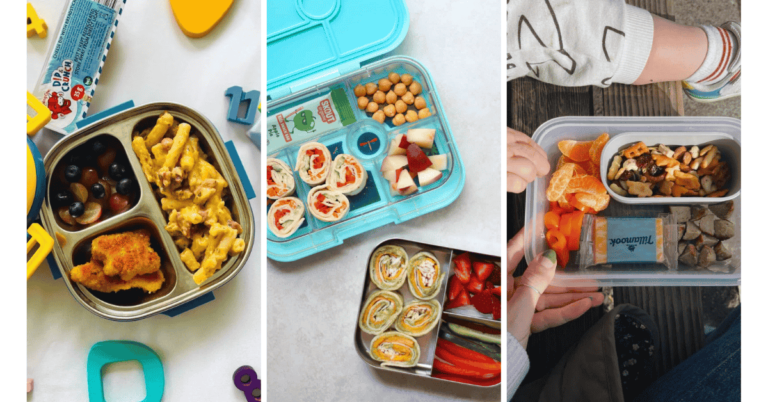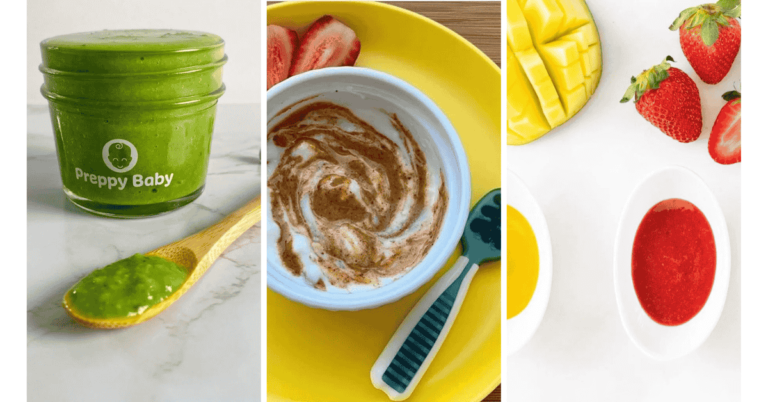16 Toddler Meals for Picky Eaters | Easy & Healthy Ideas
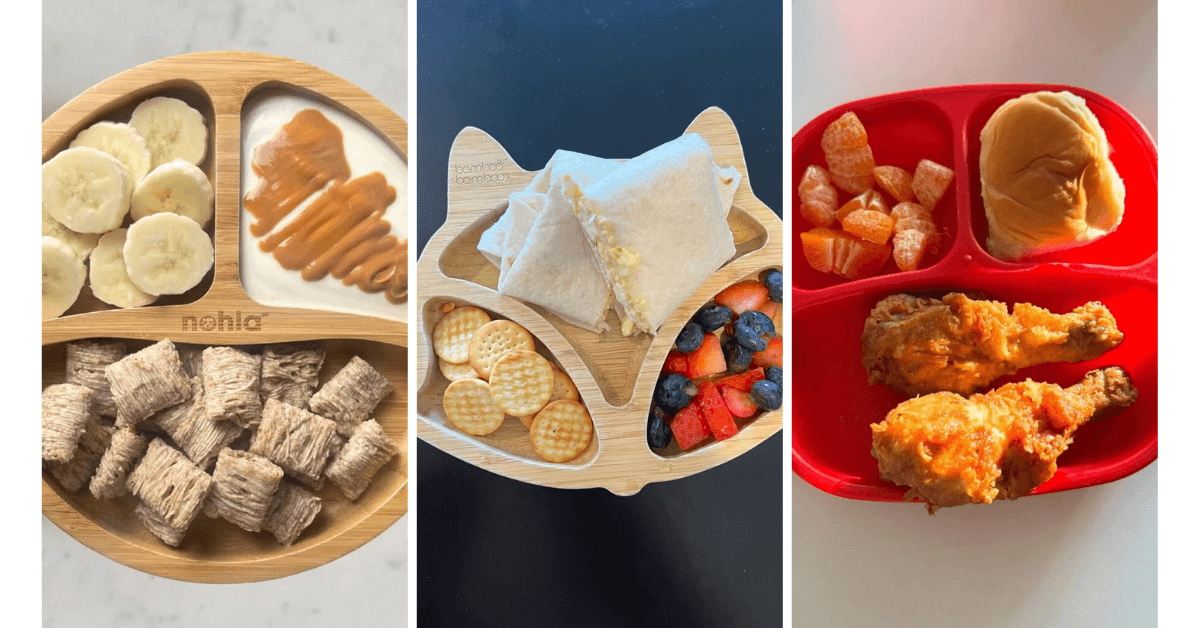
If you’ve ever spent mealtime negotiating with a pint-sized food critic, you’re not alone. Toddlers are notoriously picky eaters one day they love strawberries, the next they act like you’ve offered them poison.
But don’t worry, feeding your little one doesn’t have to be a daily power struggle. With the right mix of creativity, color, and nutrition, you can whip up meals that are both kid-approved and parent-friendly.
This list of 16 toddler meal ideas is packed with clever combinations, fun presentations, and sneaky ways to include veggies without complaints. Whether you’re dealing with a texture-sensitive tot or a flavor-adventurous foodie in training, these ideas are here to make mealtimes smoother and a whole lot more fun.
1. Scrambled Eggs with Fresh Berries – A Colorful Start to Any Day
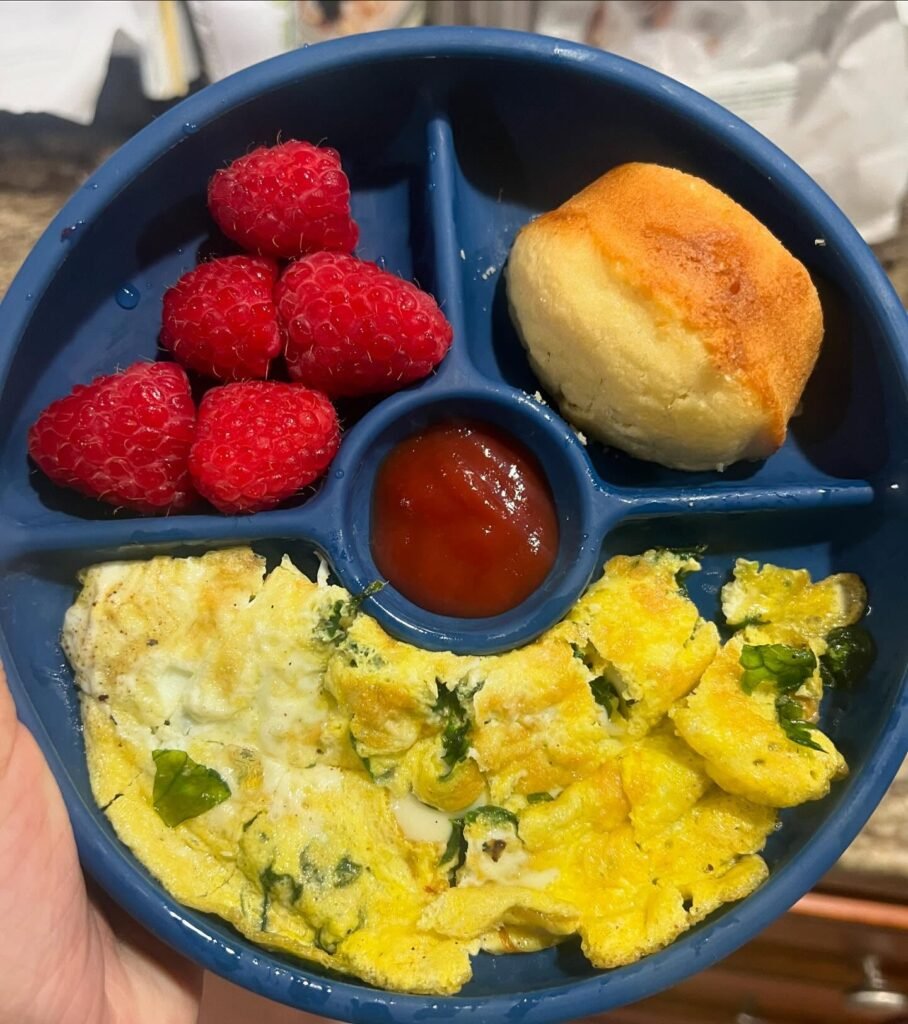
When your little one turns their nose up at breakfast, this vibrant combination of fluffy scrambled eggs with herbs, fresh raspberries, and a warm dinner roll can work wonders. The natural sweetness of the berries balances the savory eggs, while the small dipping sauce adds an element of fun that encourages exploration. This meal covers multiple food groups and provides essential proteins and vitamins in an approachable format.
The divided plate presentation helps prevent food mixing anxiety that many picky eaters experience, while the variety of textures keeps things interesting. The soft scrambled eggs are familiar and comforting, while the bright red raspberries add visual appeal that draws curious toddlers in.
Even if they only eat one component initially, you’re still providing nutritious options that can gradually expand their palate over time.
2. Mini Quesadillas with Rainbow Fruits – Finger Food Paradise
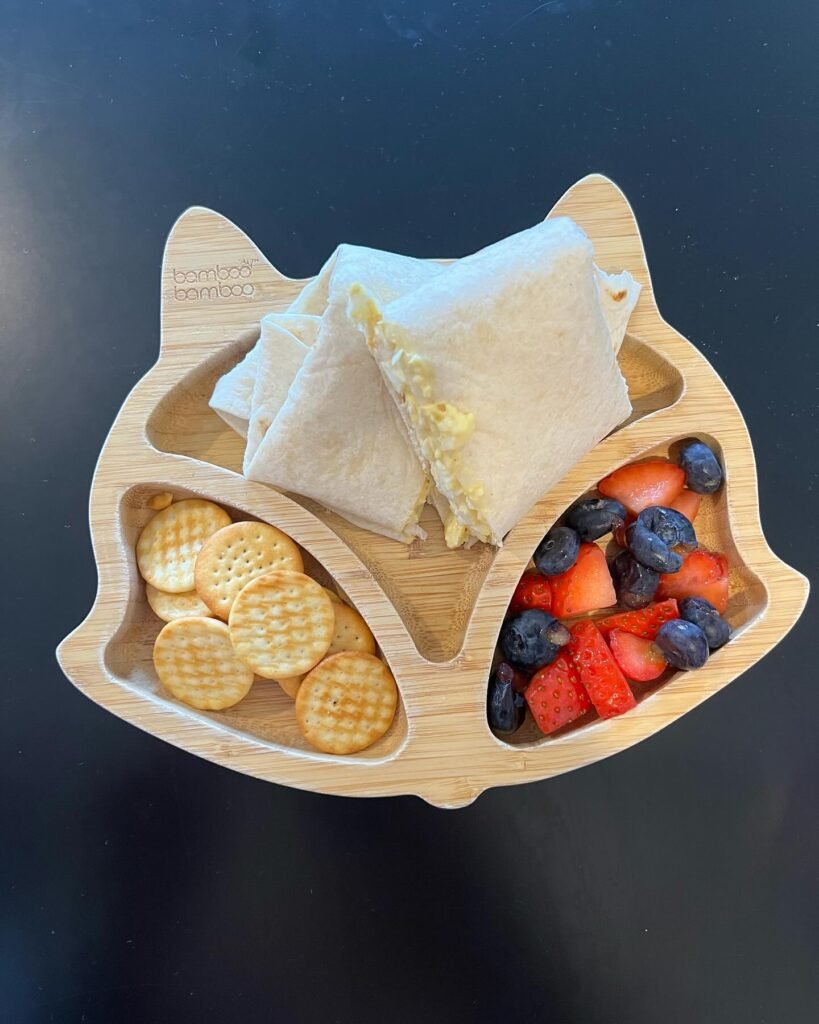
Transform mealtime into an adventure with these perfectly portioned mini quesadillas paired with colorful fresh fruits and crackers. The fox-shaped bamboo plate instantly captures attention and makes eating feel like playtime rather than a chore.
Quesadillas are naturally kid-friendly since they contain familiar ingredients like cheese and tortillas, while the fruit medley introduces natural sweetness alongside essential vitamins.
This meal strategy works particularly well because it offers multiple textures and flavors without overwhelming young taste buds. The combination of creamy melted cheese, crispy crackers, and juicy berries provides sensory variety that keeps toddlers engaged throughout the meal.
Plus, the finger-food format encourages independence and allows children to control their portions, which often leads to more successful eating experiences.
3. Roasted Vegetables and Pasta – Making Healthy Look Delicious
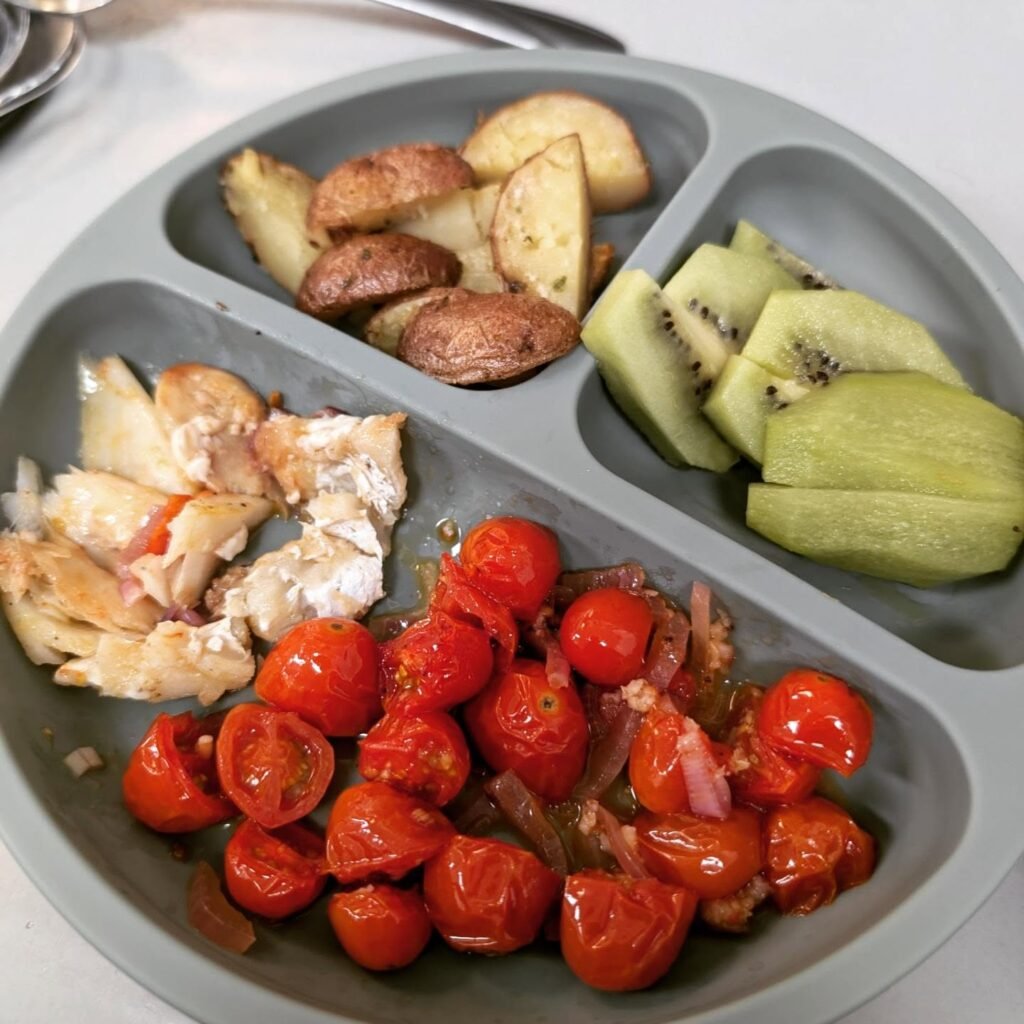
Don’t underestimate the power of beautifully roasted vegetables when it comes to winning over hesitant eaters. This combination of golden roasted potatoes, sautéed mushrooms, glazed cherry tomatoes, and fresh kiwi slices proves that healthy food can be both colorful and appealing. The caramelized edges on the vegetables add natural sweetness that many children find surprisingly enjoyable.
The key to this meal’s success lies in its varied preparation methods – some items are soft and tender while others offer gentle crunch. The familiar pasta provides a safe base that most toddlers will accept, while the roasted vegetables become sweet and less intimidating through the cooking process.
Starting with small portions of each item allows children to explore at their own pace without feeling pressured to finish everything.
4. Buffalo Chicken Bites with Sweet Additions – Comfort Food Done Right
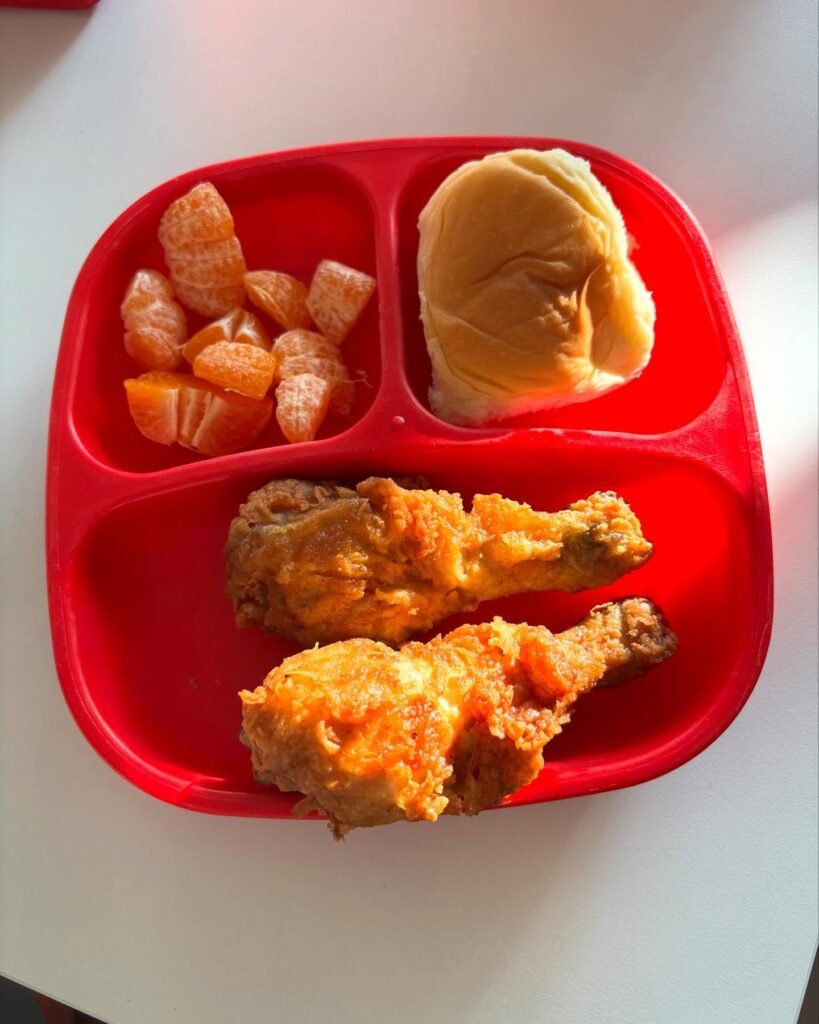
Sometimes the path to adventurous eating starts with familiar favorites, and these golden buffalo chicken pieces deliver just that. Paired with sweet mandarin orange segments and a soft dinner roll, this meal offers the perfect balance of protein, fruit, and carbohydrates.
The mild buffalo flavor introduces new tastes without being overwhelming, while the orange segments provide a cooling contrast.
The beauty of this approach lies in its simplicity and familiar textures. Most toddlers gravitate toward chicken nuggets or similar finger foods, making this a natural bridge to more diverse flavors. The orange segments not only add essential vitamin C but also help cleanse the palate between bites of the seasoned chicken.
This combination teaches children that meals can include both savory and sweet elements working together harmoniously.
5. Spinach Dal with Rice – Introducing Global Flavors Early

Expanding your toddler’s palate doesn’t have to mean abandoning nutrition, and this vibrant spinach dal with rice proves exactly that point. The creamy, mild lentil curry provides plant-based protein while the spinach adds iron and vitamins in a form that’s much more appealing than plain leafy greens. The familiar white rice serves as a neutral base that helps balance any new flavors.
This meal demonstrates how traditional comfort foods from different cultures can become part of your regular rotation. The soft, porridge-like consistency of dal is naturally appealing to many young children, while the bright yellow-green color creates visual interest.
Starting with small portions allows toddlers to sample without pressure, and the rice provides a familiar safety net if they need something recognizable on their plate.
6. Simple Snack Trio – Building Blocks of Good Nutrition
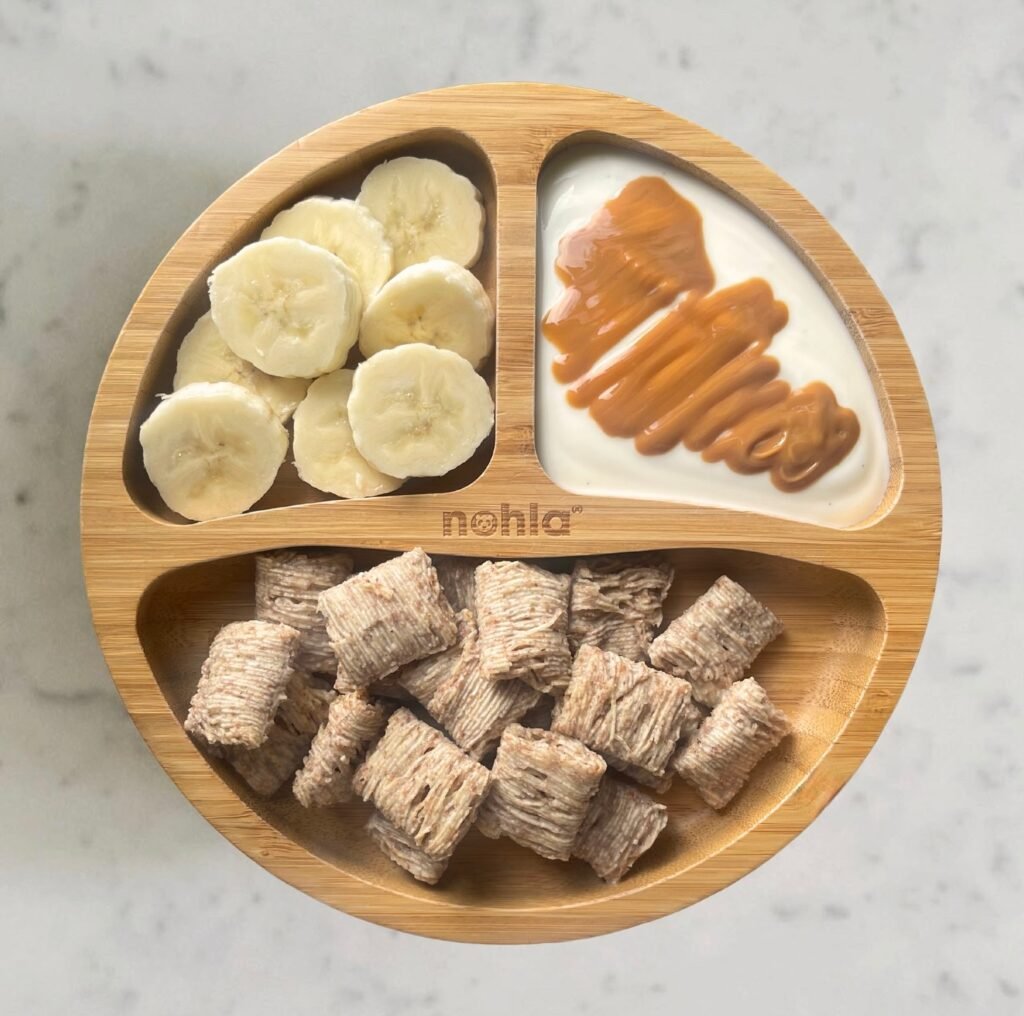
Sometimes the most effective meals for picky eaters are the simplest ones, and this combination of sliced bananas, shredded wheat cereal, and what appears to be nut butter proves that point beautifully.
Each component offers distinct nutritional benefits – potassium from bananas, fiber from whole grain cereal, and healthy fats from the spread – while maintaining textures and flavors that most children readily accept.
The genius of this meal lies in its flexibility and child-friendly portions. Toddlers can eat each item separately or combine them as they wish, giving them control over their eating experience.
The natural sweetness of bananas makes them an instant hit with most children, while the cereal provides satisfying crunch. This type of simple, component-based meal often succeeds where more complex dishes fail because it doesn’t overwhelm developing taste preferences.
7. Breakfast Hash with Fresh Fruit – Morning Energy Done Right
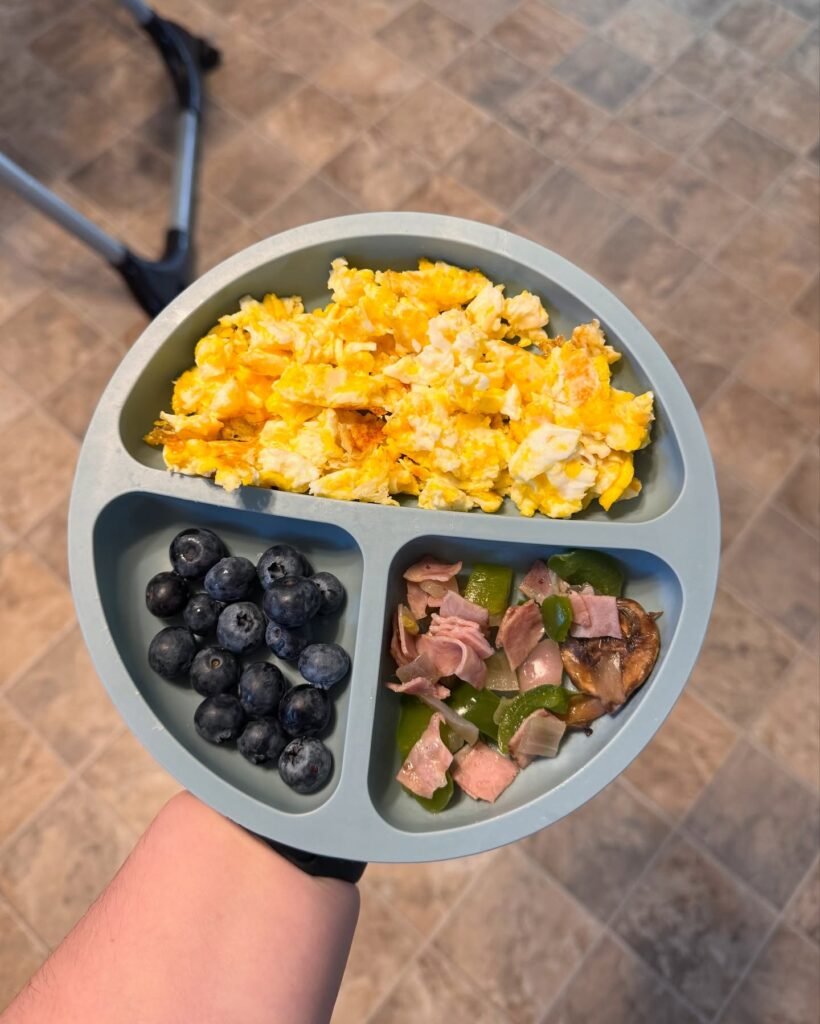
Mornings can be challenging with picky eaters, but this protein-packed scrambled egg hash with blueberries and sautéed vegetables offers a winning combination. The eggs provide essential protein for growing bodies, while the mixed vegetables add fiber and vitamins in small, manageable pieces. Fresh blueberries bring natural sweetness and antioxidants that support developing immune systems.
This meal works particularly well because it combines familiar breakfast elements in a new way, encouraging food exploration without straying too far from comfort zones. The soft scrambled texture appeals to most toddlers, while the colorful additions make the plate visually interesting.
The inclusion of vegetables in breakfast also helps establish healthy eating patterns early, showing children that nutritious foods belong at every meal of the day.
8. Nutella Toast with Fresh Additions – Sweet Treats with Benefits
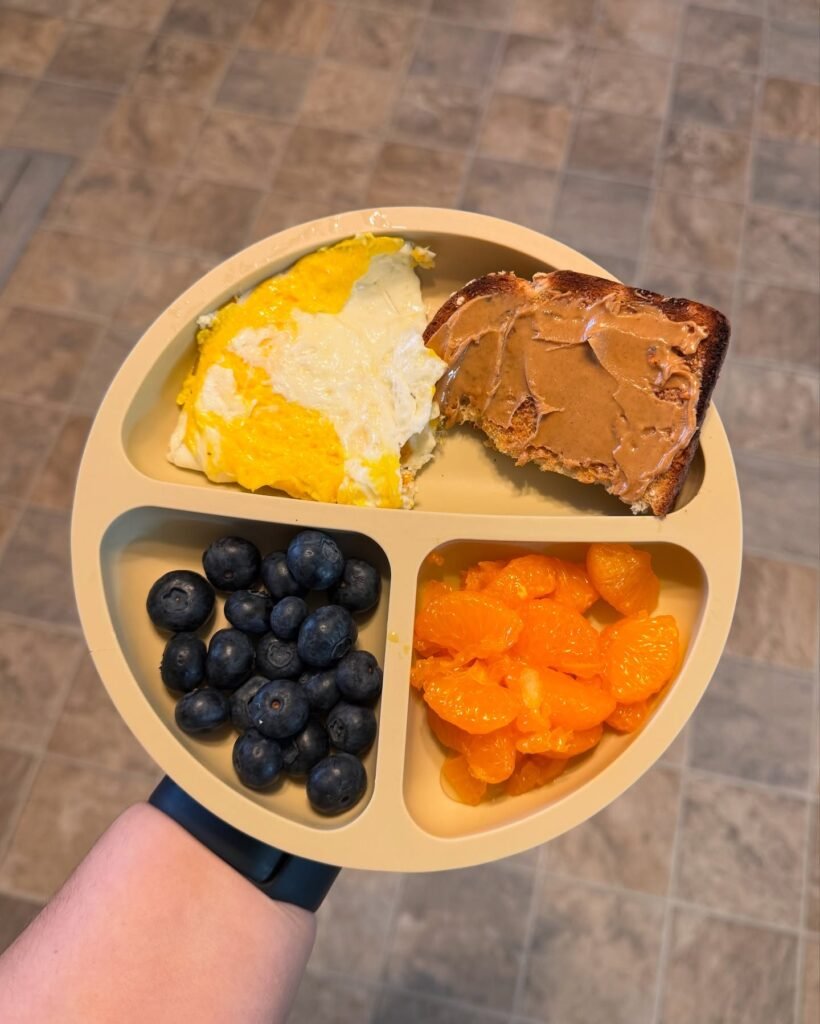
Even picky eaters need occasional treats, and this Nutella-spread toast with fresh blueberries and mandarin segments strikes the perfect balance between indulgence and nutrition. The creamy chocolate-hazelnut spread makes the whole grain bread more appealing, while the fresh fruits add vitamins and natural sweetness that complement rather than compete with the treat.
What makes this meal particularly clever is how it normalizes the combination of sweet and fresh flavors together. Many children who initially come for the Nutella discover they enjoy the burst of juice from the blueberries or the citrusy brightness of the orange segments.
This approach gradually expands their willingness to try fruits while still honoring their desire for familiar, enjoyable flavors that make mealtime pleasant rather than stressful.
9. Veggie-Packed Scramble Adventure – Hidden Nutrition Success

This colorful scrambled egg dish packed with peas, mushrooms, and fresh strawberries represents the ultimate in sneaky nutrition for hesitant eaters. The scrambled eggs act as a vehicle for delivering vegetables in a format that’s both familiar and appealing, while the bright strawberries provide vitamin C and natural sweetness. The whole grain bread adds fiber and complex carbohydrates to round out the nutritional profile.
The success of this meal lies in how the vegetables become integrated into a dish most toddlers already enjoy. The peas add pops of color and mild sweetness, while the mushrooms contribute umami flavor that enhances the overall taste without being identifiable to suspicious young palates.
This approach teaches children that vegetables can be part of delicious, satisfying meals rather than separate, unwanted obligations on their plates.
10. Fun-Shaped Finger Foods That Make Eating Exciting
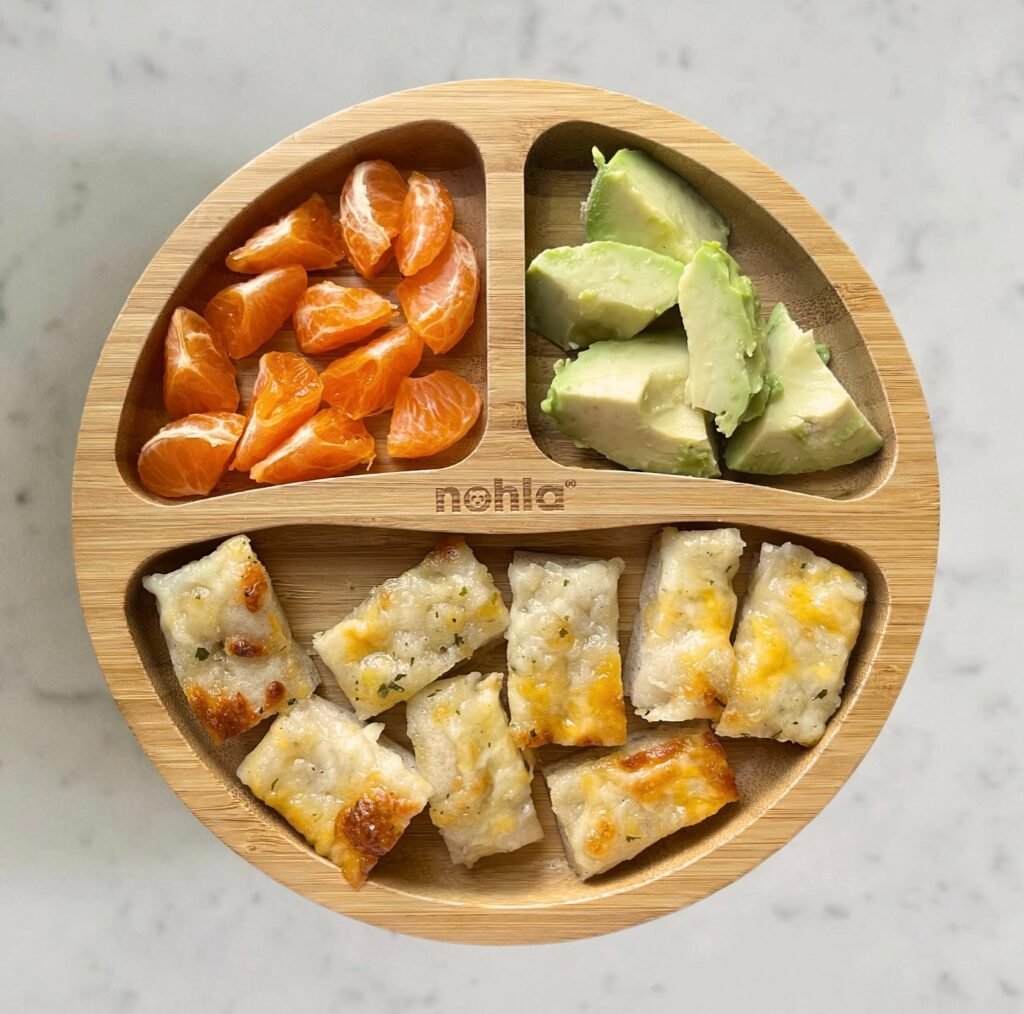
Transform ordinary ingredients into extraordinary meals by cutting foods into appealing shapes and arranging them in colorful compartments. The combination of bright orange citrus segments, creamy avocado slices, and golden baked finger foods creates a visually stimulating plate that naturally draws toddlers’ attention.
Using divided plates or compartmented containers helps prevent different foods from touching, which is often a major concern for selective eaters.
The key to success with this approach lies in offering familiar textures alongside new ones, allowing your little one to explore at their own pace. These bite-sized portions are perfect for developing fine motor skills while encouraging self-feeding independence.
The variety ensures that even if your toddler only eats one or two items, they’re still getting valuable nutrients from fruits, healthy fats, and whole grains.
11. Mediterranean-Inspired Bowl Adventures
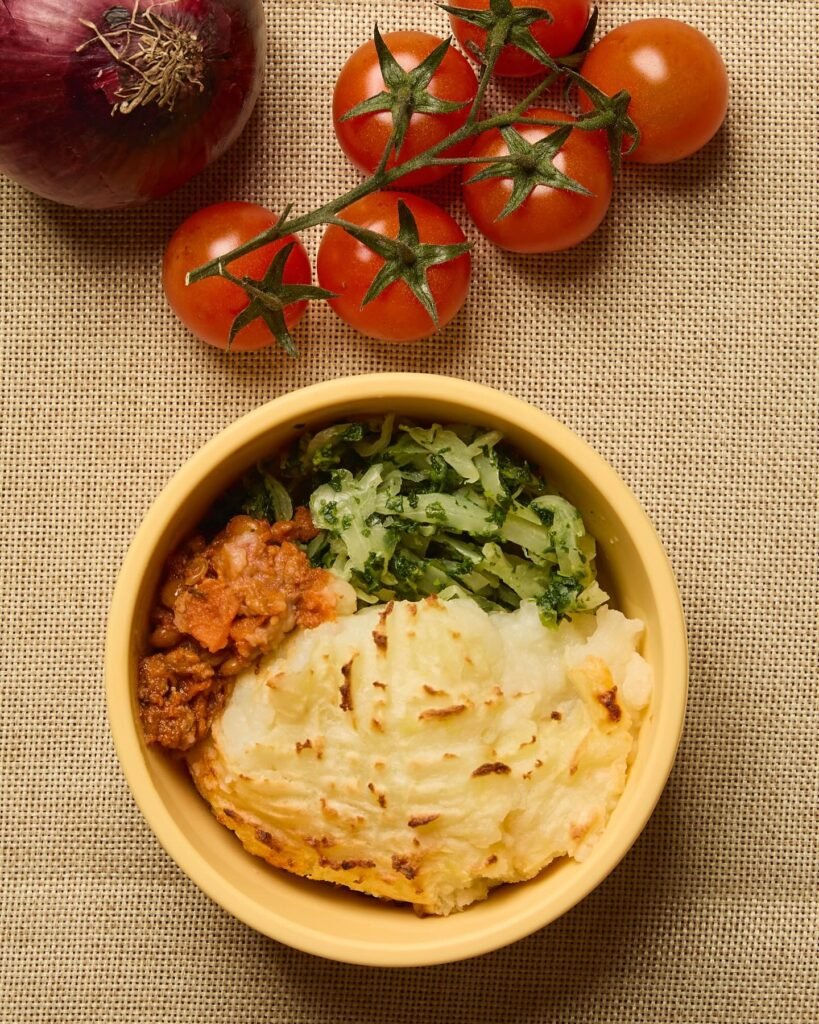
Create an exciting culinary journey with a colorful bowl featuring Mediterranean flavors that appeal to young palates. This approach combines creamy hummus as a familiar base with fresh herbs and roasted vegetables, introducing new tastes gradually. The warm, earthy colors and varied textures provide sensory stimulation while the mild flavors won’t overwhelm sensitive taste buds.
Bowl meals work wonderfully for picky eaters because they can choose which elements to try without feeling pressured to eat everything. The creamy consistency of the main components makes this meal particularly appealing to toddlers who prefer smoother textures, while the fresh garnishes add visual interest and optional flavor boosts.
This style of meal also encourages exploration through dipping and mixing, making mealtime more interactive and enjoyable.
12. Portable Pastry Pockets for Busy Days
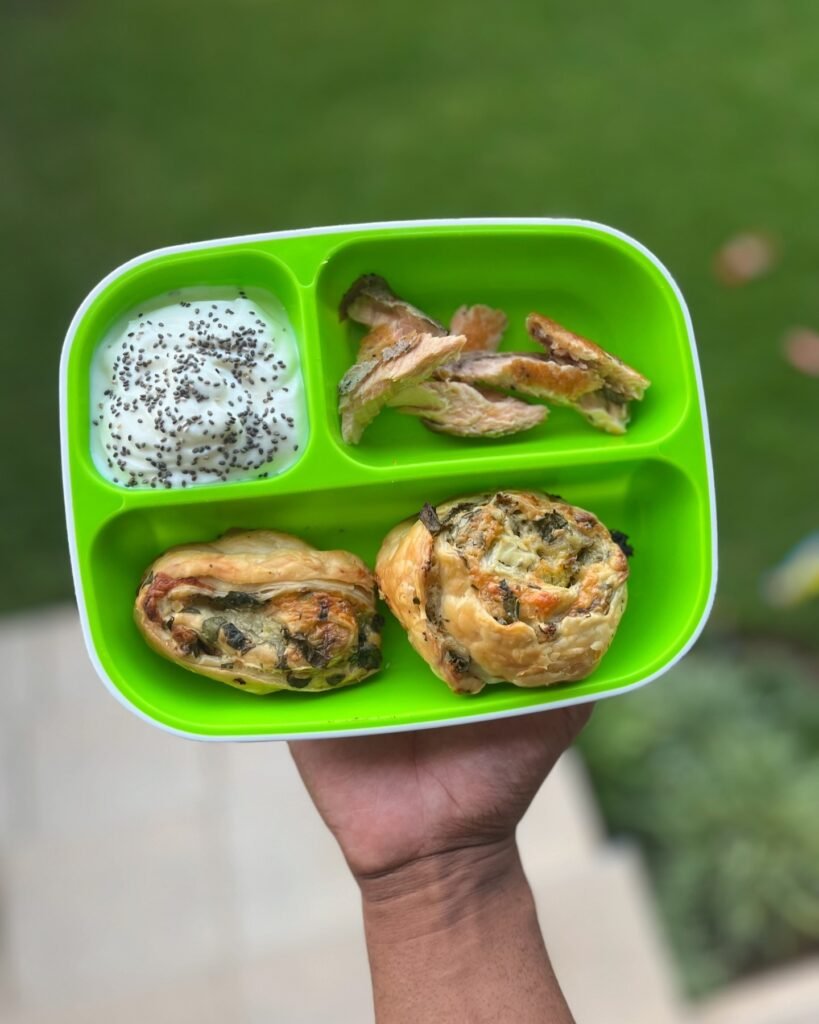
Handheld foods wrapped in flaky pastry provide an excellent solution for toddlers who prefer foods they can control completely. These golden pockets can be filled with familiar ingredients like cheese, mild vegetables, or even sweet options, making them versatile for any meal or snack time.
The pastry exterior offers a satisfying crunch that many children find irresistible, while the soft interior provides comfort and familiarity.
The beauty of pastry pockets lies in their disguise factor – you can sneak nutritious ingredients inside while maintaining the appeal of a handheld treat. Serve alongside a simple yogurt dip with chia seeds to add protein and healthy fats without overwhelming the meal.
This combination works particularly well for toddlers who are going through phases where they only want to eat with their hands or refuse traditional plate presentations.
13. Sweet Success with Miniature Treats
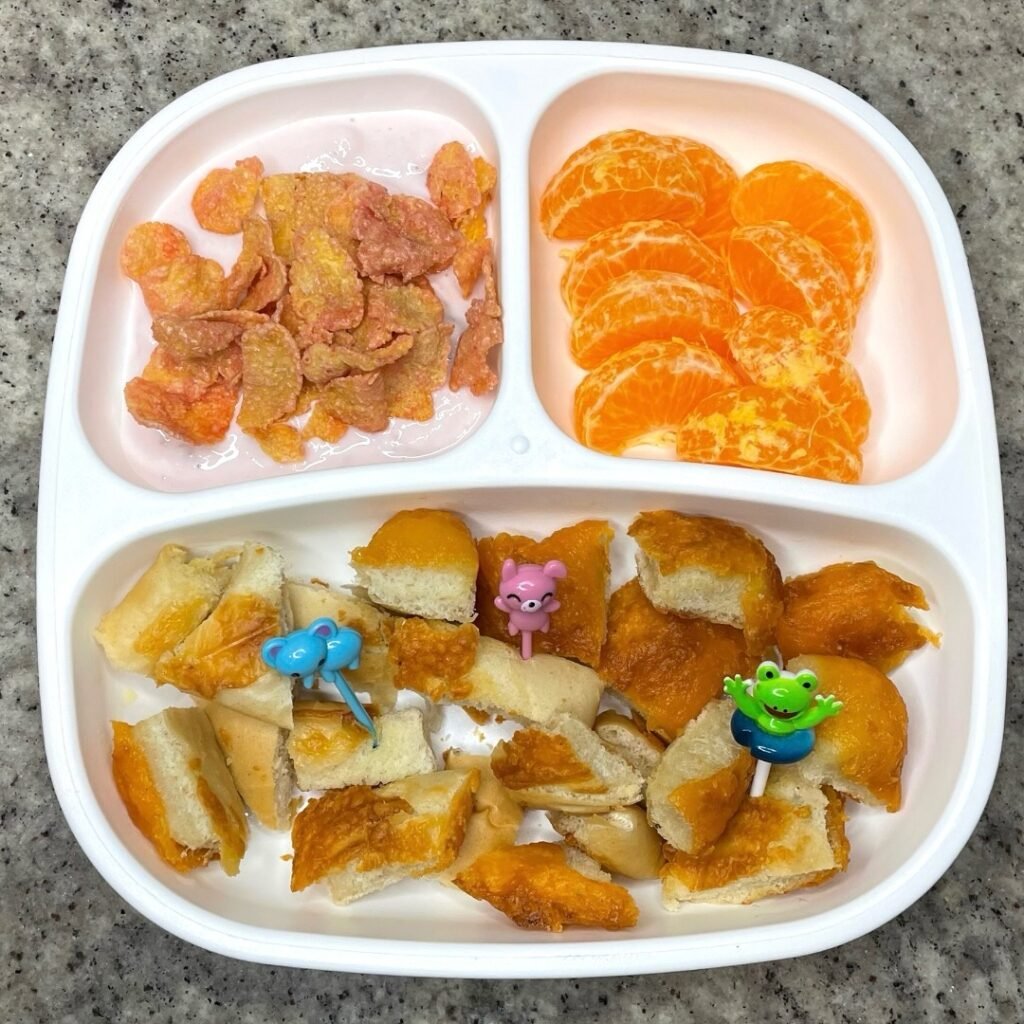
Sometimes the path to mealtime peace involves embracing your toddler’s sweet preferences while maintaining nutritional value. These bite-sized portions of bread with natural fruit spreads, fresh citrus segments, and small cookies create a balanced approach to satisfying both taste preferences and nutritional needs.
The inclusion of colorful food picks adds an element of play that transforms eating into an engaging activity.
Portion control becomes effortless with this miniaturized approach, allowing toddlers to feel successful when they finish their meal without being overwhelmed by large servings. The variety ensures that different taste preferences are met within a single meal, increasing the likelihood that your picky eater will find something appealing.
This strategy works especially well during challenging eating phases, providing a foundation of accepted foods while gently introducing new elements.
14. Simple Classics That Never Fail
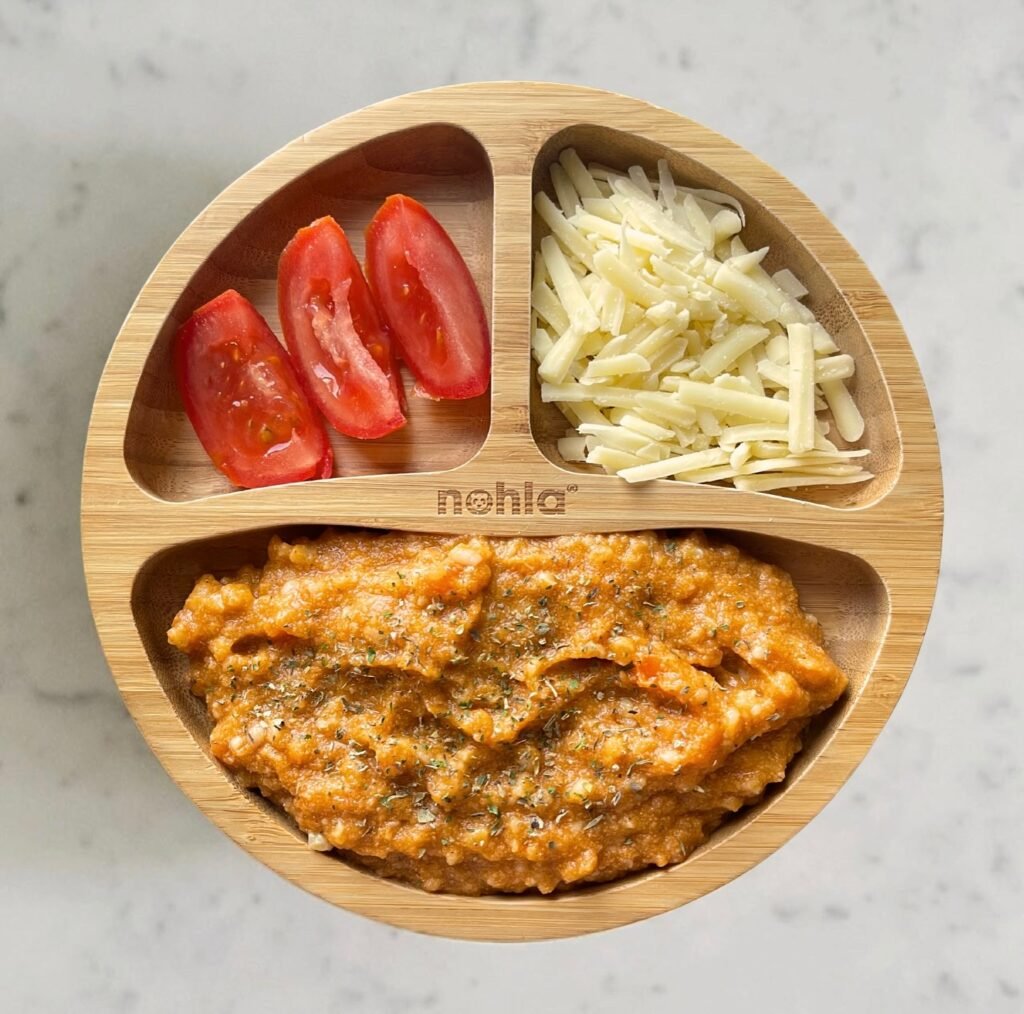
Return to basics with straightforward combinations that focus on textures and flavors most toddlers naturally enjoy. The contrast between crispy foods and soft accompaniments provides sensory variety without introducing challenging new tastes.
Fresh tomato slices add natural sweetness and important vitamins, while shredded cheese offers familiar comfort and essential calcium for growing bodies.
This minimalist approach often succeeds where complex meals fail because it respects your toddler’s developmental need for predictability and control.
Each component can be eaten separately or combined according to your child’s preferences, promoting autonomy while ensuring balanced nutrition. The familiar flavors build confidence around mealtime, creating positive associations that can gradually expand to include new foods over time.
15. Playful Presentations That Spark Curiosity
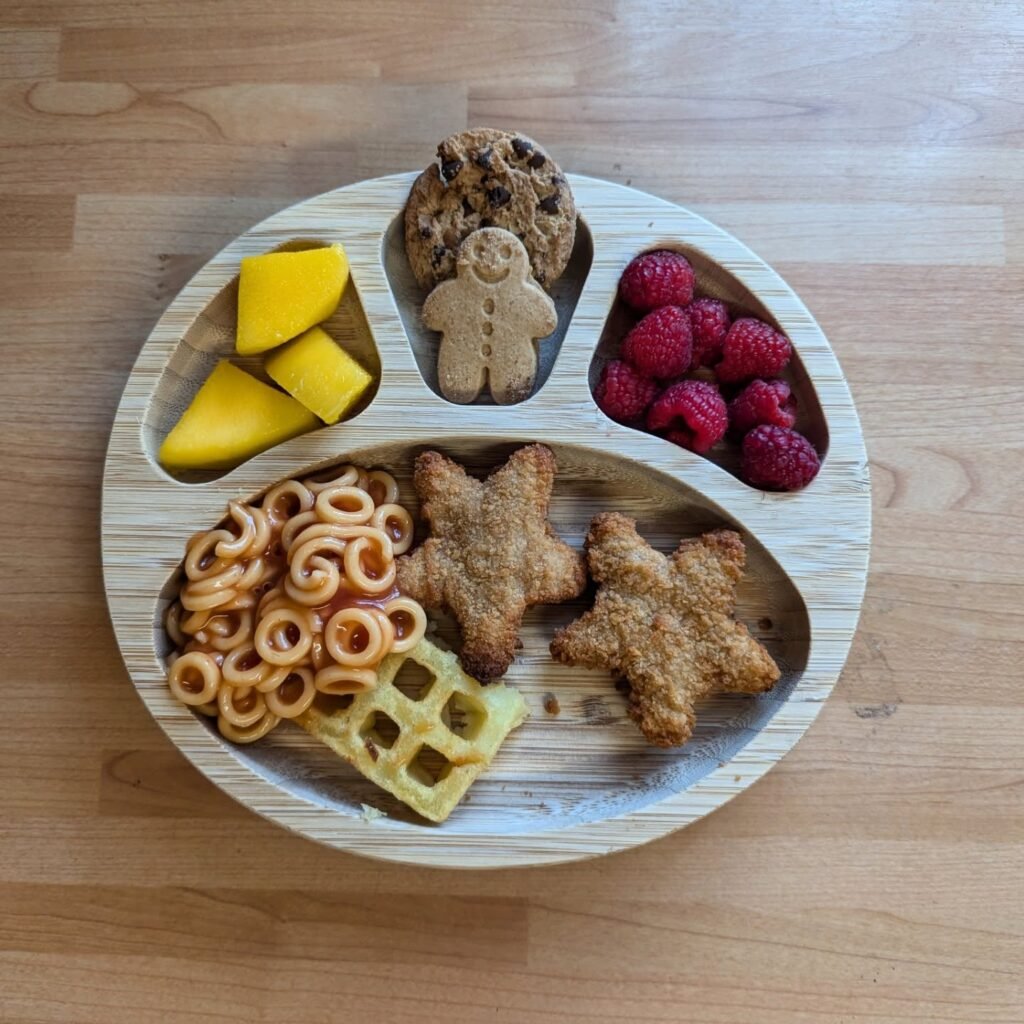
Elevate everyday foods through creative presentations that turn meals into delightful discoveries. Star-shaped items and cheerful cookies alongside fresh fruit create a sense of celebration around eating, while the variety of textures caters to different sensory preferences. The combination of sweet and savory elements ensures that various taste preferences are accommodated within a single, cohesive meal.
The magic of this approach lies in its ability to make healthy foods feel special and exciting rather than like a daily struggle. Curved pasta shapes and fun food arrangements naturally encourage exploration and play, which are essential components of developing a healthy relationship with food.
This presentation style works particularly well for visual learners and children who respond positively to novelty and surprise in their daily routines.
16. Sushi-Style Rice Balls for Adventurous Little Eaters
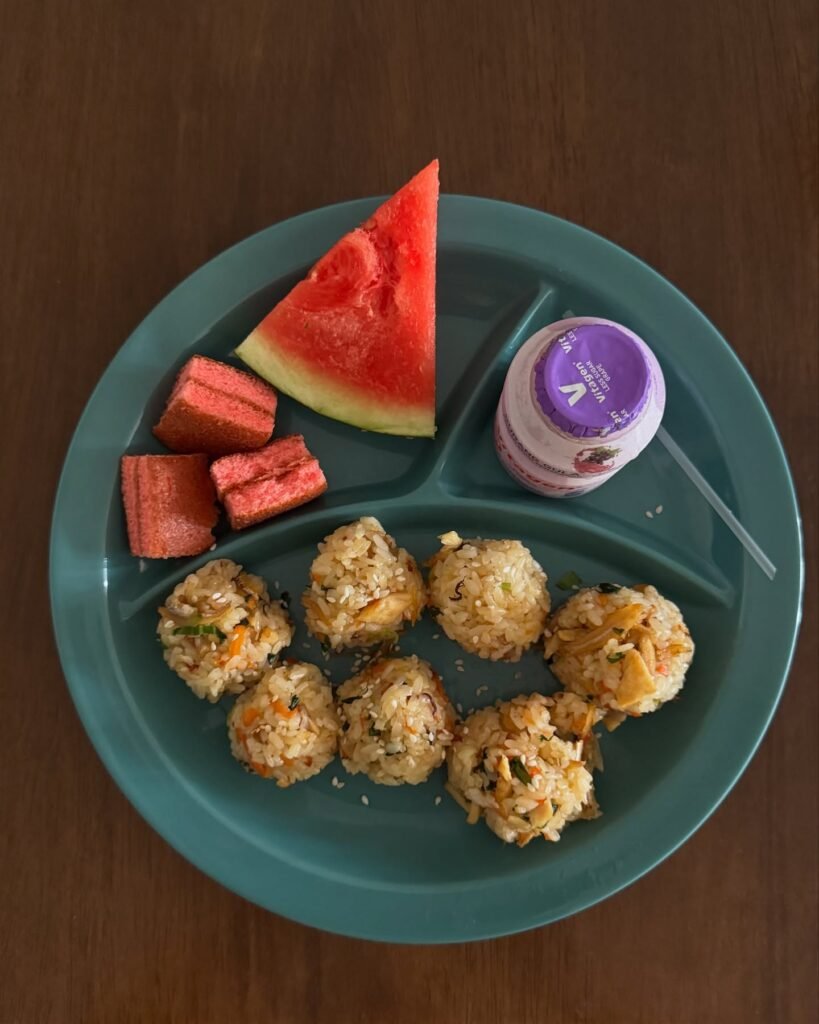
Introduce your toddler to exciting new flavors with these colorful rice balls that combine familiar ingredients in an appealing bite-sized format. These mini rice creations are packed with mild vegetables and can be customized with your child’s favorite ingredients, making them an excellent way to expand their palate gradually.
The round, compact shape makes them perfect for little hands to grasp independently, encouraging self-feeding skills while providing essential carbohydrates and nutrients.
The genius of this meal lies in its flexibility – you can hide finely chopped vegetables inside the rice where picky eaters won’t immediately notice them, while the mild flavors won’t overwhelm sensitive taste buds. Paired with refreshing watermelon wedges and cubes, plus a familiar yogurt cup, this combination offers a perfect balance of textures and tastes.
The natural sweetness of the watermelon provides a comforting element that helps balance any hesitation about trying the new rice balls, creating a meal that feels both adventurous and safe.
Conclusion:
Feeding picky toddlers might feel like an endless guessing game, but the key is variety, patience, and a sprinkle of creativity. These 16 meal ideas aren’t just about nutrition they’re about turning food into an experience your child looks forward to. By playing with colors, textures, and presentation, you’re helping your little one build a positive relationship with food one bite at a time.
Remember, it’s okay if not every meal is a hit. Keep offering new options, revisit old favorites, and celebrate the small victories. Because when it comes to toddlers and mealtime, progress is always worth cheering on.

